June 23 2024
The southern Sardinian interior resembles the California foothills. Seasonal rains, so similar to that of California are now gone, replaced by a long, hot summer.
Vast hay fields spread across the landscape, the first cut of the season recently complete, most hay lay in place, some bundled in those giant rolls wrapped in plastic.
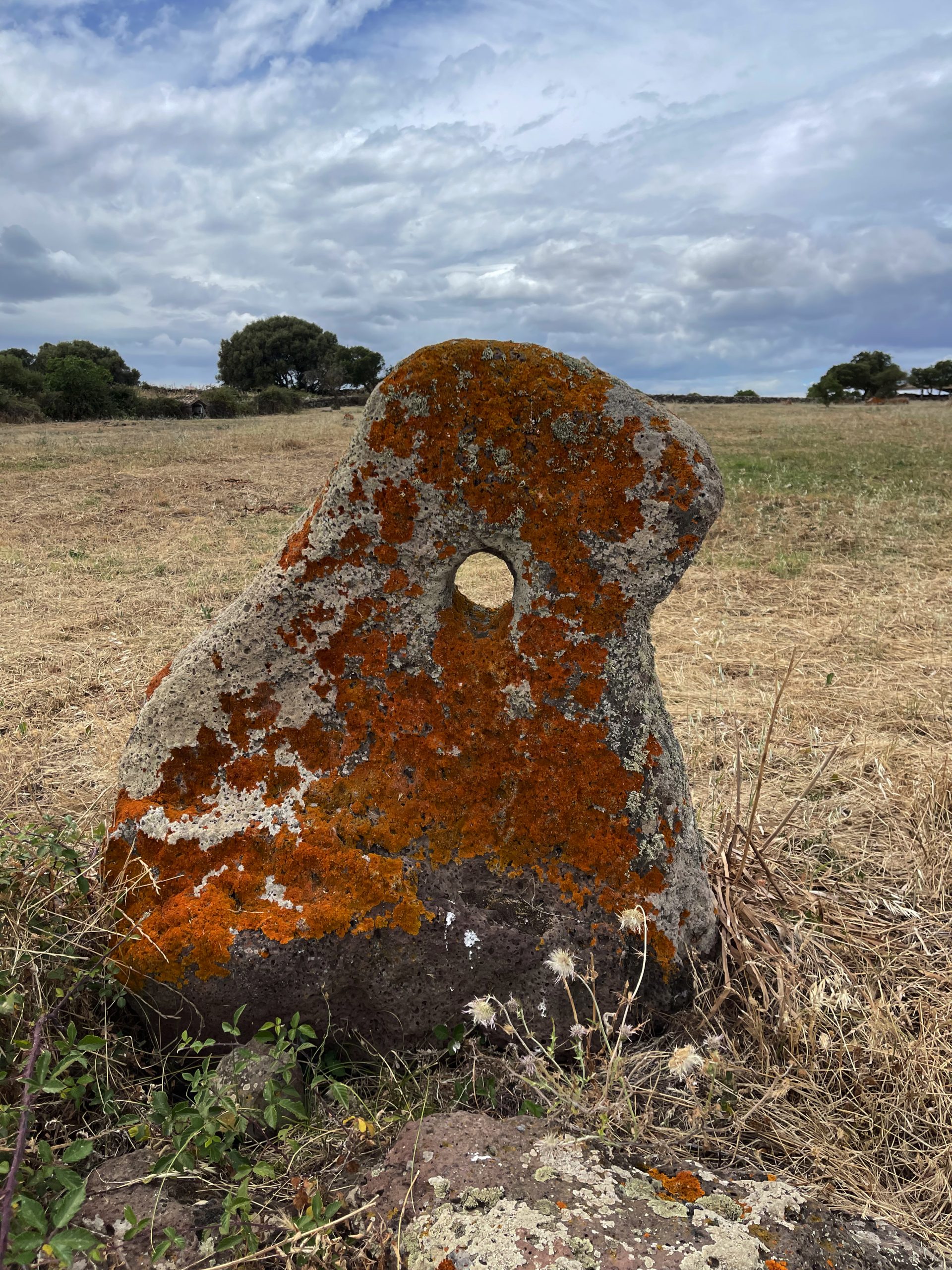
The roads and fields bordered by chest high stone barriers; certainly not to be called fences. These barriers, the product of hand labor for centuries, line the roads on both sides and criss-cross the fields. Five-hundred-pounders form the base, progressively diminishing in size as the barrier rises. At chest level the stones diminish to the size of a melon; the barrier resembling the form of an inverted ‘V’.
Native cork trees are plentiful, lining the fields and roadside. Other hardwood species, like madrone, and other bushy robust species guard the barriers.
Mandas

My Sunday drive has me brought me to Mandas, exploring train travel, local museums and Nuraghe Arrubui, the ‘red’ nuraghe.
Wandering Mandas during Sunday mid-morning, all is closed and sleeping, creating an opportunity to wander the cobbled side streets, without the stares from locals. The wander leads me to view the church steeple, and signs indicate the old center.
Like many of the old villages, the main church was built during the eighteenth and nineteenth centuries. The upkeep is immaculate, the grounds cobbled in the local round river stones, cemented in place with sand and time. Somehow closed at 10 am Sunday morning.
Spying about across the church complex an open door beckons, invites closer examination. Approaching the small stone structure a young man emerges, “Che cosa?”, I query.
“il museo”, the reply.
“Aperti”, my next rejoinder.
“Si, Si, Si”, for one affirmative response of “Si” never seems sufficient. Three is common, two is the minimum. Mainly.
We chat, my broken Italian now becoming increasingly more comprehensible, his words understandable, my knowing the context. The ‘museo’ being the ancient church, now attractively restored with new roof, power and all necessary improvements. Perhaps twelve hundred square feet, the stone walled church features Catholic objects dating to the 13th century: silver chalices, bibles, relics of saints and a full figure in repose within a gilded glass enclosure; she with crown and gold embroidered vestments. Always a macabre sight.
After musing, I seek cappuccino and train station. Walking toward the train station I recognize a restaurant from my journey to Mandas twelve years past. Mandas was my point of departure in 2012 on Trenino Verde toward the coast. I soon recognized the narrow gauge station and old locomotive with rolling stock. The piazza is updated, a home improvement store is now prominent, but the tone is unchanged.
Red Nuraghe
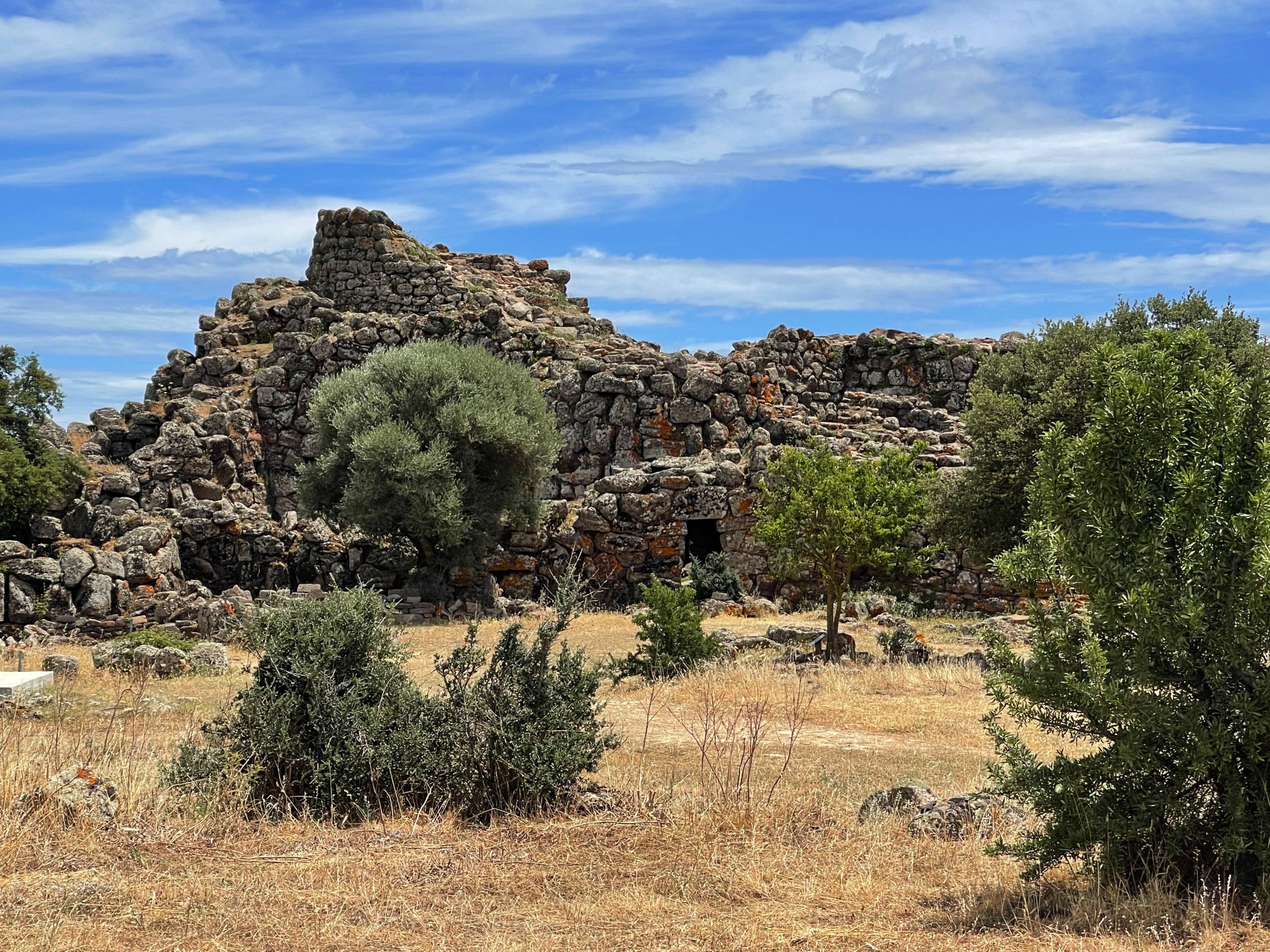
The Red Nuraghe, Nuraghe Arrubiu, dominates the surrounding landscape. Undoubtedly build over many generations, the complex of towers, intermediate walls and outer barriers must have been defensive. Like a medieval castle, the central tower would have been first. This tower once stood eighty feet high, tapering slightly, perhaps at a 80 degree angle from the horizontal. The construction blocks are semi-dressed, nearly uniform in shape and size, diminishing slightly in size towards the upper tiers. Such quality were the blocks that subsequent civilizations, most likely the Romans, repurposed the blocks for their structures.
The central tower includes internal rooms that archeologists have determined were for food preparation. A ‘bakery’ has been identified within, through discovery of grain, milled flour, flat-bread, charcoal and remnants of an ‘oven’. Nearby is the communal kitchen with evidence suggesting a preparation table, open hearth and seeds dated to approximately 1400 BCE.
Adjoining the central tower are five sub-towers, connected by walls and accessed via internal passages. The sub-towers are less than half the height of the central tower and built of rough, undressed stone. The connecting walls tend to lean against the central tower, indicating the tower was built prior to the outer elements. The outer walls and towers feature ‘gun ports’, narrow vertical openings reminiscent of castles of later centuries, used by archers.
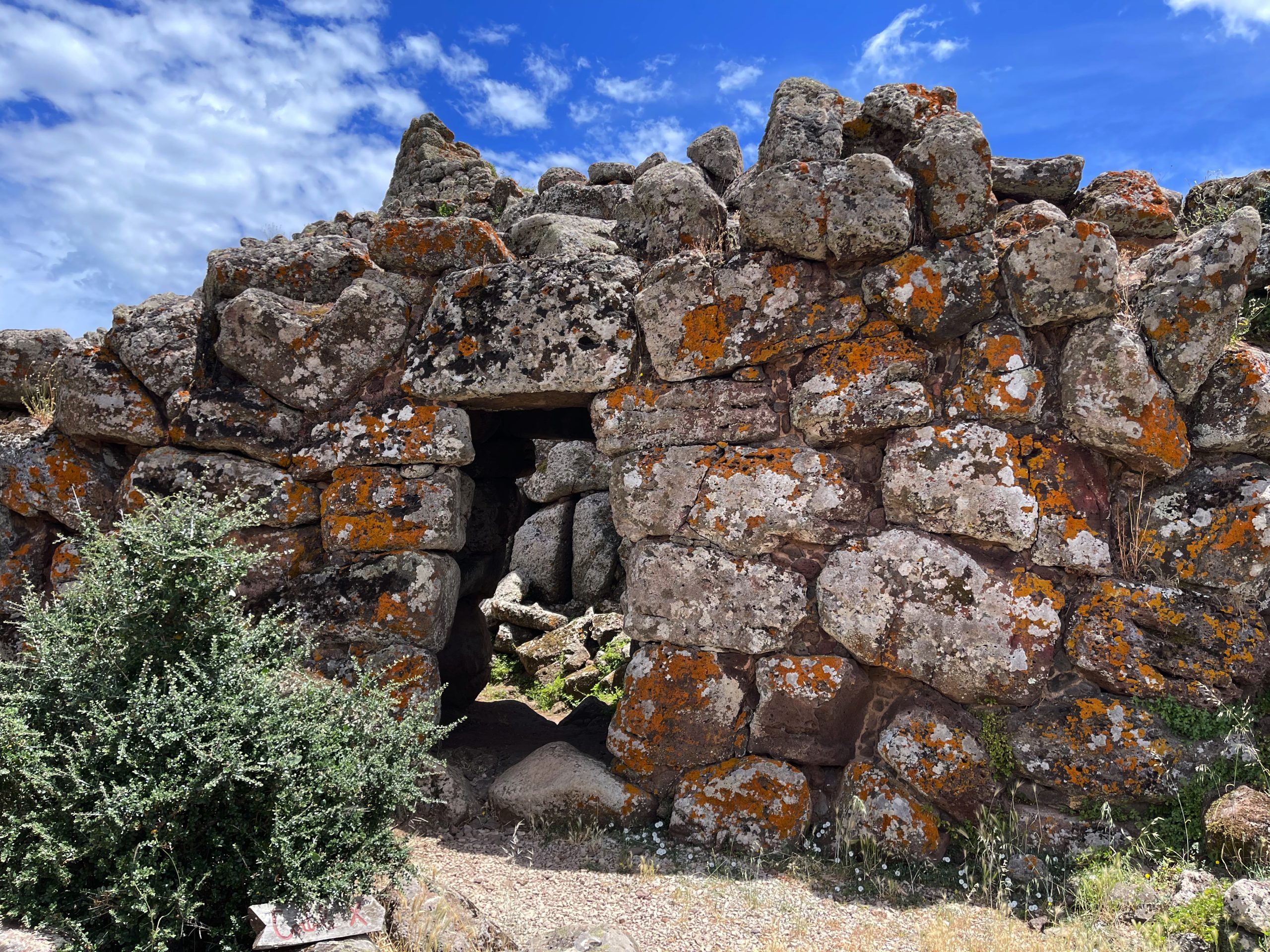
Nuraghe Arrubiu is accessed by a single entrance through the outer walls. Just inside are niches, likely defensive, then a second internal entrance. An intruder must pass a gauntlet.
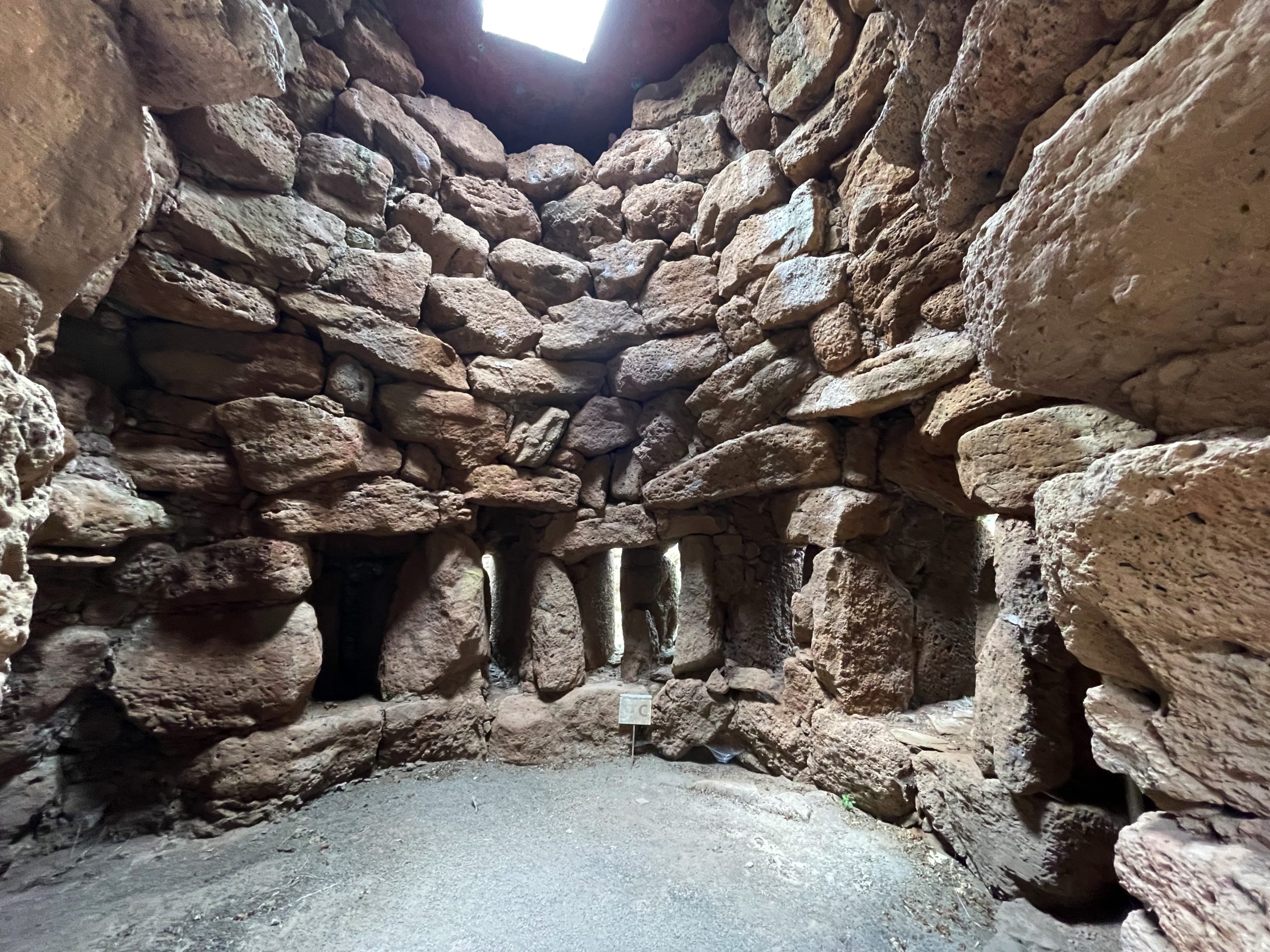
Unlike many nuraghi, Nuraghe Arrubiu does not enclose and protect a ‘sacred well’. Archeological excavations have ascertained the central tower rests upon bedrock. Upon the bedrock layer, supposed water channels have been identified which are theorized to have directed rainwater to a cistern.
Outside the central tower, within the outer walls a circular ‘silo’ has been identified. The silo has no entrance and was lined on floor and sides with clay. Analysis speculates the ’silo’ was grain storage, for barley, millet and ancient grain was discovered within.
The is no extant village surrounding the nuraghe. Undoubtedly there was such a village for circular foundation stones are observable.
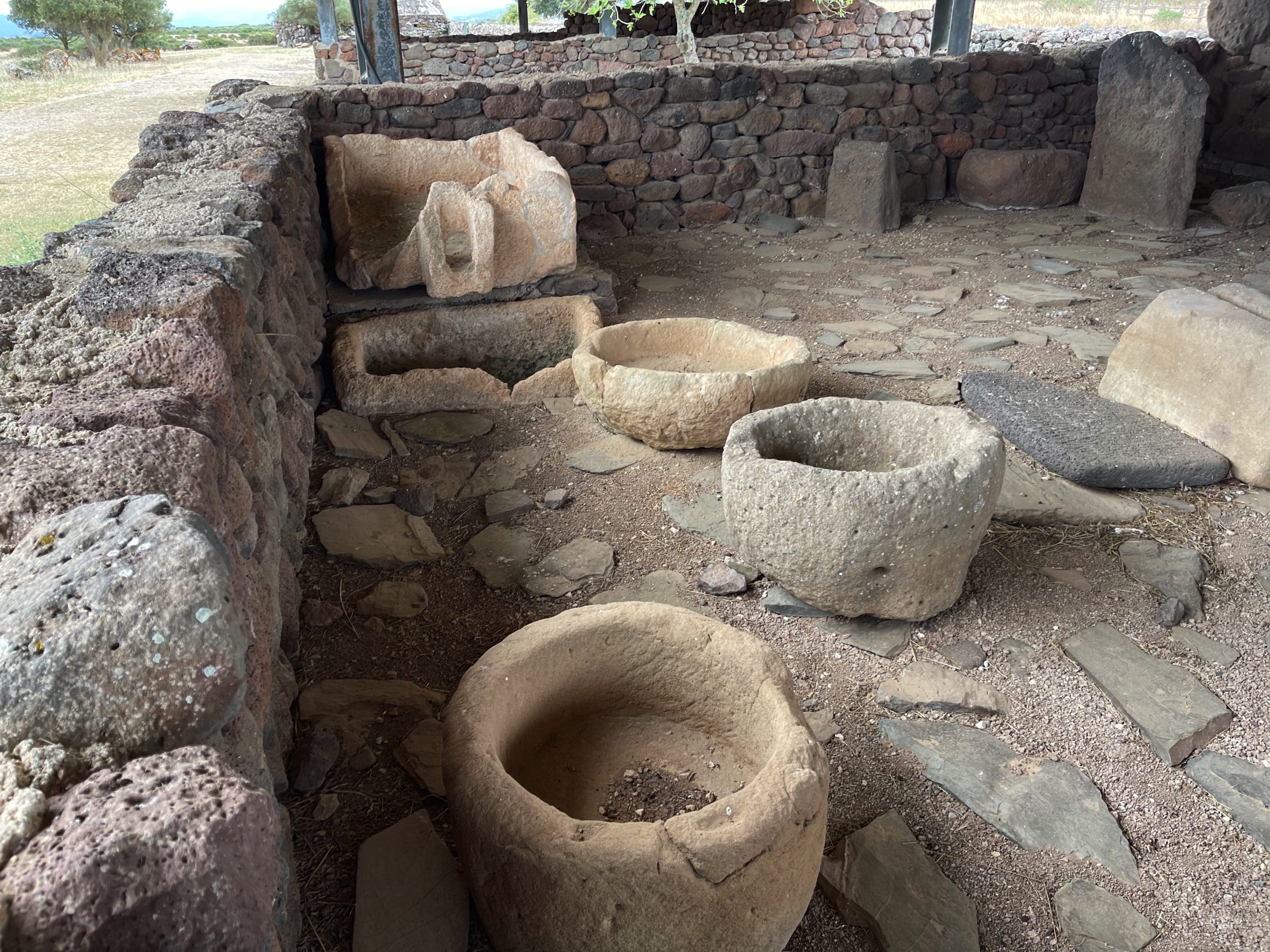
Evidence of succeeding civilizations is observable. Romans conquered the island in 235 BCE and finding the area with tillable soil, water infrastructure and ready building materials, settled in the area. Roman presence is evident in the existence of rectangular structures, coins, weapons and wine making.
Orroli
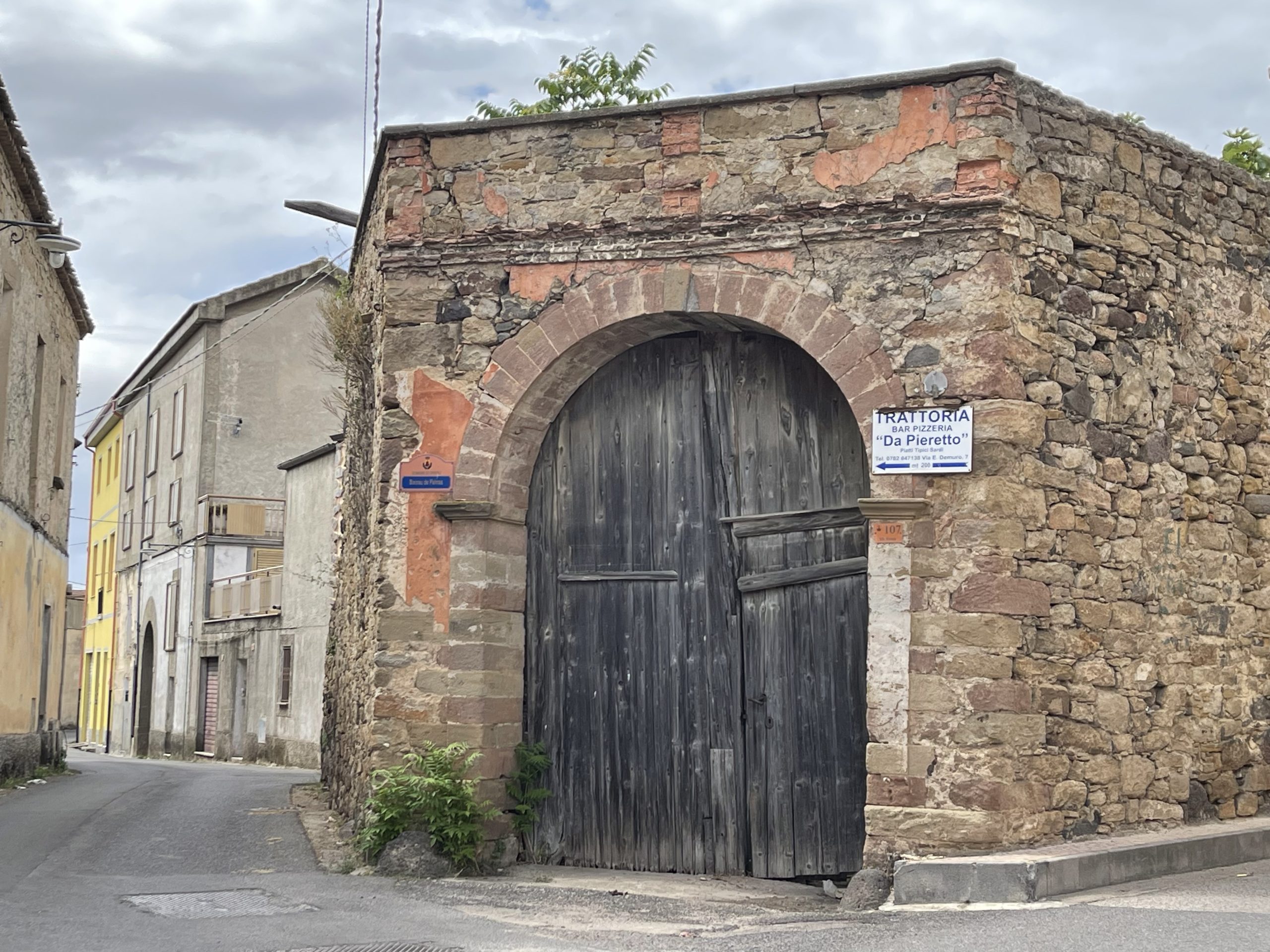
During my slow drive home I cruised and stopped in the village of Orroli, to soak up the ambiance and look over the postcard setting. Creeping along cobbled streets I waved to an old fellow sitting on a stoop. The tiny old toothless man was resting, apparently in his usual spot, waving and chatting with anyone who passed. Following my examination of a ‘piazza piccolo’ and assorted old stone buildings, I glanced his way. He quickly gestured with waves and words for me to join him for a spell, to sit and visit. My fellow soon began to talk at length, connecting seemingly unconnectable stories of his life, work and the village.
Sardinia being an identified ‘blue-zone’, a land of many centenarians. There are many 100 year old men living in Sardinia, particularly within the interior villages. Rare for men to live to 100. This cheerful fellow was not yet 100 years, and well under 100 pounds.
Another quite apparent centenarian fellow was out for a ‘walk’, with a cane in left hand and right arm outstretched to every wall, block and bench available. He did not take shortcuts, but followed the contours of walls, benches and fountains to his shady sitting spot. No doubt close to, or beyond, 100 years. I attempted to communicate, hoping to take his picture, but he shook his head with incomprehension and mumbled off.
Sights of old Italy.